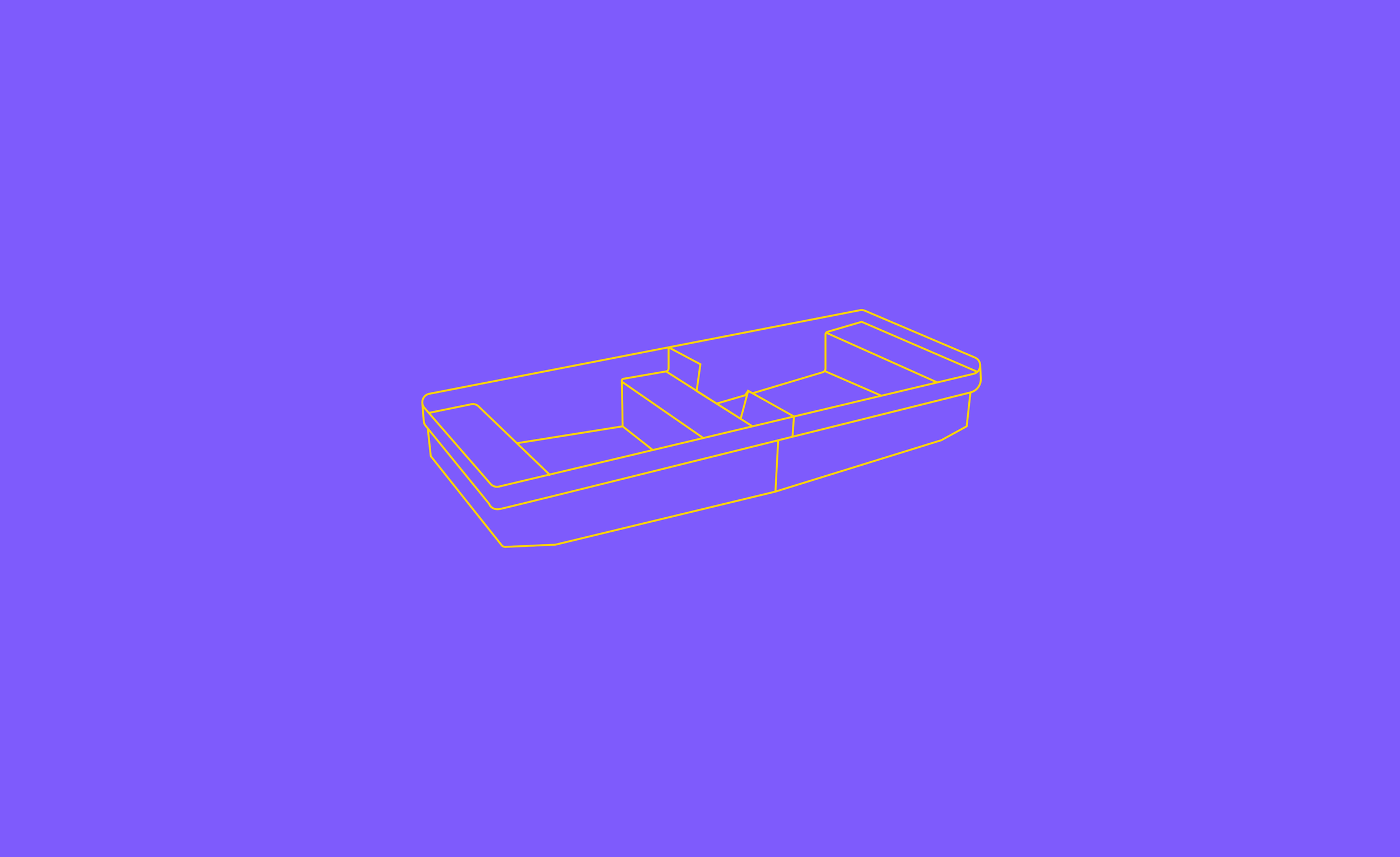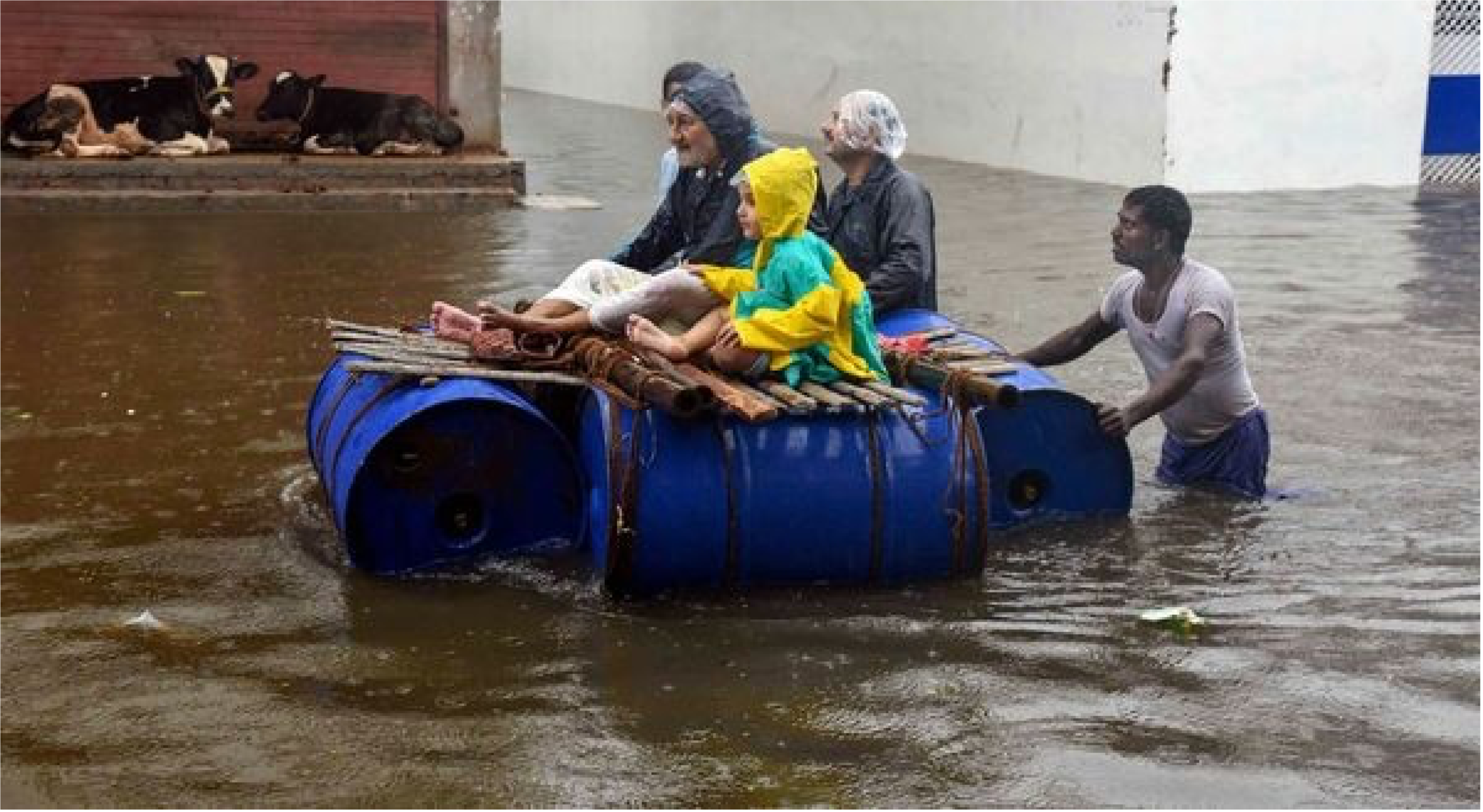
Flood Response Unit

Flood Response Unit
When we know it’s going to rain today, we carry an umbrella.
What do we do if we know it’s going to flood?
The Brahmaputra river floods in Assam are a recurrence and locals have accepted them as part of their lifestyle, often using “jugaad” tactics to survive. Despite this being a relatively predictable, yearly disaster, there is a tremendous loss of life and livelihood every year. Although there are systems in place for flood prevention and relief, there needs to be a system that can prepare locals for timely evacuation. As part of a semester thesis project, I designed a compact evacuation unit that can be deployed by a family in response to a flood.
My Role: Thesis project, Research, Conceptualisation, Product Design
Timeline:
4 months
Deliverables: Product Sketches, Scaled Mockup, Project Report

Overview
The final concept is a multipurpose emergency boat that can be used without the help of a rescue official. It can be broken down into 4 features:

My Process

Wicked Problems
A system of disaster management, where several stakeholders interact in an unpredictable manner and respond to a situation that can change any moment constitutes a wicked problem for a designer. Owing to the nature of such a problem, it is difficult to rightly predict user behaviour. For me this implied some restrictions to the conventional design process - like the nature of the research or the possibility of user testing.
Literature Review
I went through newspapers, journal articles and photographs before talking to users. I learnt about the current scenario around floods and all the problems associated with it, especially in the context of Assam.

Secondary User Interviews
Since this is a wicked problem, the behaviour of the users wouldn’t match their attitude to the crisis. Given the scope of the project, it would be difficult to monitor user behaviour live. Instead of taking primary user interviews, I spoke to subject matter experts as they would be able to provide a reliable testimony.


Problem areas and the brief
From the insights gained during the secondary user research, several major problems were identified. I crossed out those that felt too vast or too trivial given the scope of this project.

To move the project forward I had to decide where I should intervene. It was clear that the way to save more lives and ease the disaster management process for the rescue operatives was to tackle it at a grassroots level: by making the locals prepared and self-sufficient. Thus the brief was finalised:

Ideation
The first stage of ideation involved setting some basic criteria that the product must follow and coming up with concepts for what the product would be - not its exact working but a general idea of its nature.
Would it be a device the user could carry?
Could the user wear it?
Should it be distributed to homes?
Should it be bought in a store?
These questions could only be answered once the key purpose of the device was decided. This was done using the SCAMPER tool, where I imagined myself in the role of the user in the different scenarios mentioned during interviews. What if my hostel room flooded and I had 5 minutes to pack up my things and leave?

SCAMPER tool for ideation
For each scenario I asked myself: What could I substitute? Combine? Modify? The tool helped me better distinguish between things that would be redundant and those which would be absolutely essential. The final outcome was a list of features that the device must have, regardless of form, method of use or mechanism.

Must have features of the device
Conceptualisation
With the concept behind the product ready it was time to experiment with all the different ways it could work. A moodboard set a general direction and the final idea was selected from a number of sketches and dirty mockups.

Some discarded concepts

Moodboard



Dirty Mockups
Concept Screening
Each mockup was compared on its features, cost and sustainability. Since the design was for a disaster situation, the most ideal design would be one that is simple and quick to deploy and has minimal possibilities of failure.
Final Design
Everything from the exact contents of the first aid box, the cost and the materials and processes was figured out. I presented the final concept in the form of detail sketches and a scaled down mockup made of foam board.

Components and functions of the unit

Components of the storage boxes within the boat
Materials and Processes
The final product will be made of high density polyethylene (HDPE) through the process of rotational moulding. The boat has been designed in such a way that both halves can be manufactured using the same mould, and an additional storage box/seat can be inserted into any one half during assembly. The durability of the material will allow the boat to be reused multiple times, adding to the environmental and economic sustainability of the already socially sustainable solution.




Foam board mockup scaled down in the ratio of 1:3
Experience and Outcome
The project is currently in its pre-design stage. It needs to be further developed and the next step is to source funding to create a fully working prototype so it can be tested on users. This project was one of my first experiences in user research and detailed design. I learned how to represent my concepts in multiple ways, and how to convert research insights into meaningful design directions. It even went on to get shortlisted for the Gandhian Young Technological Innovation (GYTI) Awards in 2020!
